Classification of Mallow
Kingdom: Plants
Clade: Angiosperm (Flower plant); Eudicots
Order: Malvale
Family: Malvaceae
Introducing the Family Malvaceae
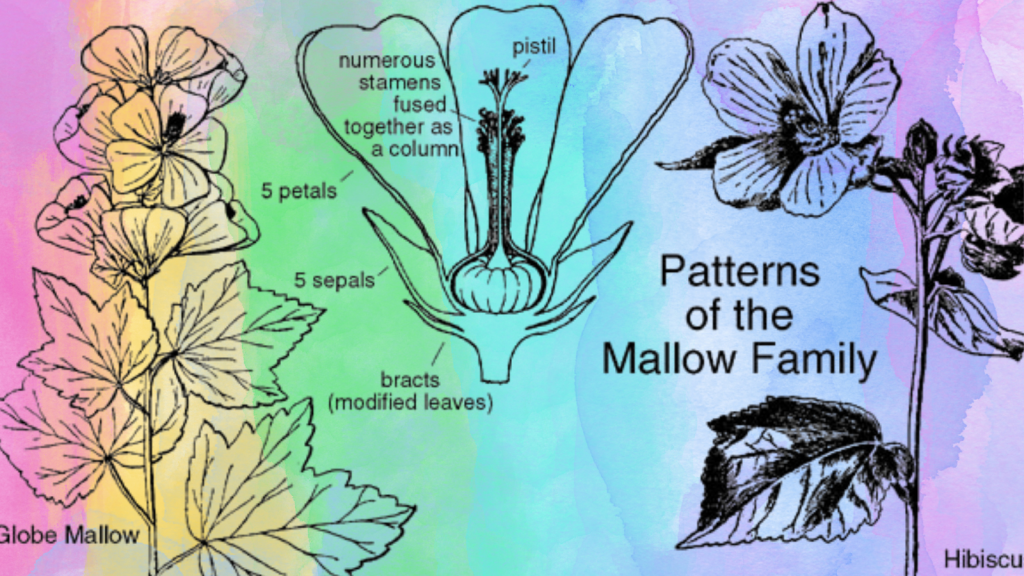
The Malvaceae family is impressive. Many if not all of these family members seem to offer a powerhouse of medicinal benefits. I am impressed with the diversified nature of the species within this family. A few of its family members are listed below.
- Cotton
- Hibiscus
- Okra
- Cacao
- Hollyhock
- Marshmallow
- Common Mallow
Common Mallow, Genus Malva
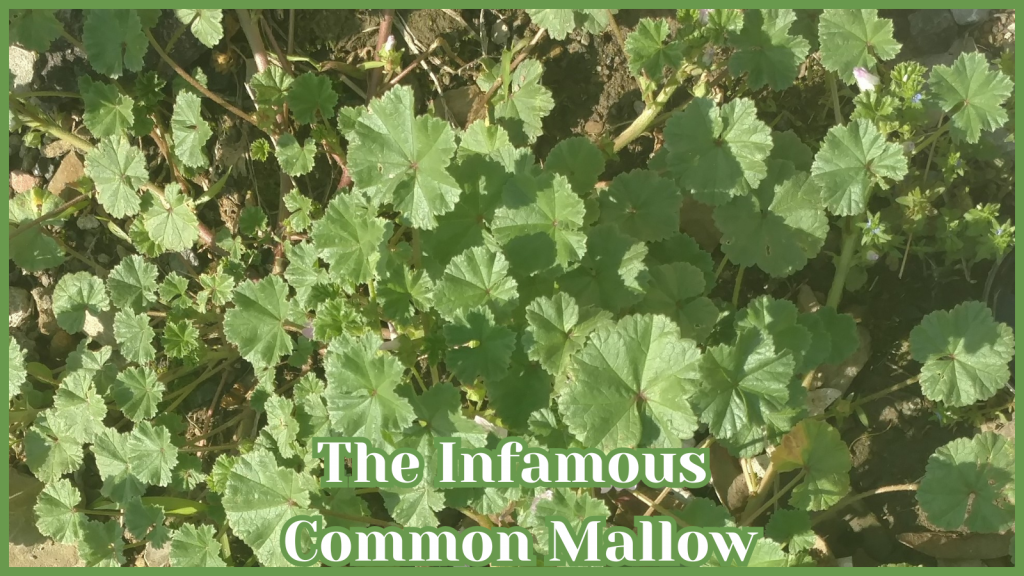
Although common mallow is not as powerful as its relative marshmallow, it still has its usefulness and is worthy of mention. Common Mallow can be found nearly everywhere. This availability makes it both accessible and valuable. Come along with me as we explore and discover how diversified common mallow is.
Environments Common Mallow Thrives in
Common mallow thrives in every growing condition, from wastelands to the tropics. It can be transformative as it changes compacted wasteland into a well conditioned earth. This transformative ability combined with it’s nutrient rich constituents and ability to thrive in any condition make it an excellent contender as a cover crop. People and creatures love common mallow. The bees love it too. Whatever attracts bees is welcome in my backyard!
Common Mallow History and Ancient Traditions
I am not the only one who appreciates this little herb. In fact, most ancient cultures shared this appreciation, valuing mallow as a plant with rich historical significance. For instance, common mallow was a treasured vegetable in local markets throughout antiquity. Furthermore, mallow was prized not only for its nutritional content but also for its versatility as a medicinal plant. Consequently, the ancients used this herb to treat a wide range of conditions, including soreness, swelling, gastrointestinal issues, coughs, and skin problems.
Modern Thoughts
Unlike cultures of the past, in today’s modern world, common mallow is underappreciated. It is seen more as a nuisance weed versus a nutritional staple and medicinal marvel. For example, you will find methods for marshmallow weed eradication, instead of instructions on the principles of its medicinal applications. Fortunately, there are still groups of people who realize the value of this ancient herb and its diverse medicinal applications.
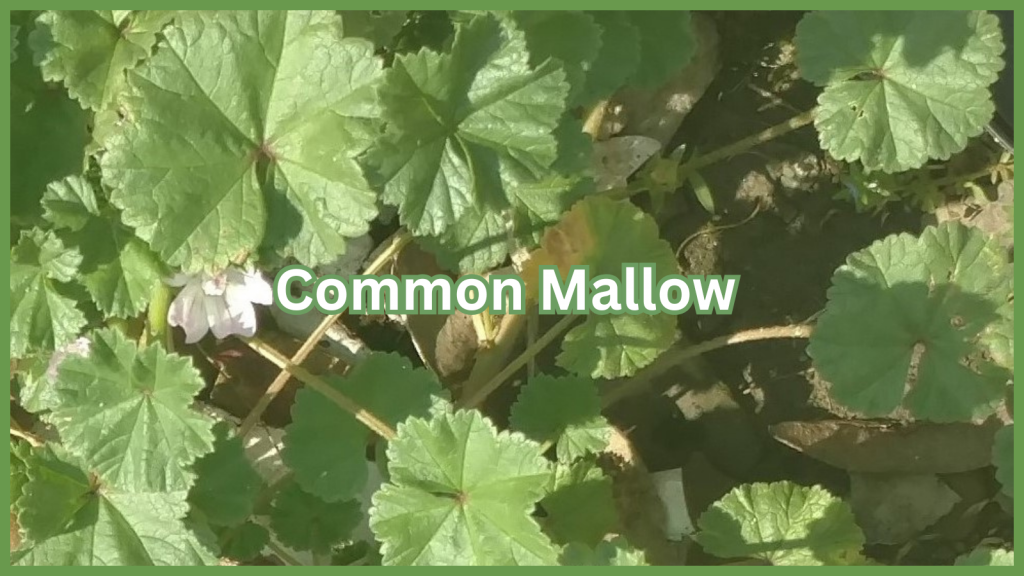
Modern Uses of Mallow
Common mallow, with its unique soothing properties, is a herb that not only offers a range of culinary possibilities but also packs a nutritional punch. All parts of this herb, from the roots to the leaves, fruit, and flowers, are edible. These aerial parts can be enjoyed in their raw form or cooked. When cooked, the leaves and roots reveal their mucilaginous properties, adding a unique texture and a wealth of nutrients to your dishes.
Young mallow leaves and flowers, with their mild flavor, can add a delightful touch to any salad. When cooked, the older leaves resemble spinach. For a crunchy snack, try frying some leaves in hot avocado oil to make mallow chips. The roots, when cooked, can be used to create a fantastic vegetable cream, or blended with water to make a nutritious plant-based milk. And don’t forget the fruit of mallow, which look like mini cheese wheels and have a unique, delicious taste when picked fresh and eaten on their own, a flavor that will surely pique your curiosity and leave you eager for more!
Medicinal Facts
The common mallow’s high mucilage content makes it an effective anti-inflammatory. Common mallow helps to heal and regulate the urinary, digestive, and respiratory systems. This mucilage is rich in protein and Carbs.
Mallow, being mucilaginous, has a unique quality when brewed into a tea. The tea naturally thickens, creating a gentle coating for your throat and digestive tract. This natural thickening is a key feature that makes mallow tea an effective remedy for a sore throat.
Mallow improves sleep, treats headaches, and reduces some of the signs of aging. Add mallow to improve face masks.
You can harvest the leaves from spring through summer, and the mallow flowers in late spring. Mid-summer is when the mallow seed pods are formed. The harvested mallow herb should be dried and stored in a cool dry place. The dried herb is now ready to make tea or tinctures.

Constituents of The Common Mallow Plant
The Properties are listed below.
- Vitamin A, B, C and E
- Inulin (predominately the root)
- Magnesium
- Zinc
- Selenium
- Potassium
- Iron
Common mallow’s global popularity is a testament to its impressive range of uses. Whether it’s enhancing the flavor of your dinner, providing a boost to your health, or offering a relaxing tea experience. Consider adding this plant to your backyard garden. Common mallow has it all. Join the global community of mallow enthusiasts and discover its wonders in your next soup or salad, knowing that you’re taking care of your health.
Marshmallow, Genus Althaea
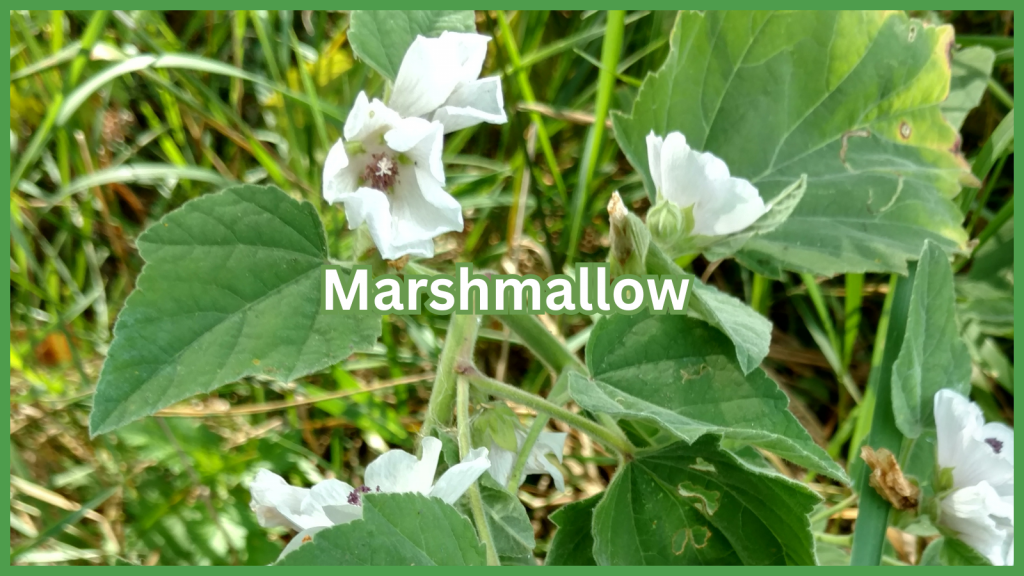
Now I get to introduce you to the powerhouse, the marshmallow plant! Marshmallow is in the same family as the Common Mallow plant. Although marshmallow seems to have many more practical and medicinal uses than its counterpart, common mallow. Marshmallow thrives in the same environments as common mallow.
History and Ancient Traditions of Marshmallow
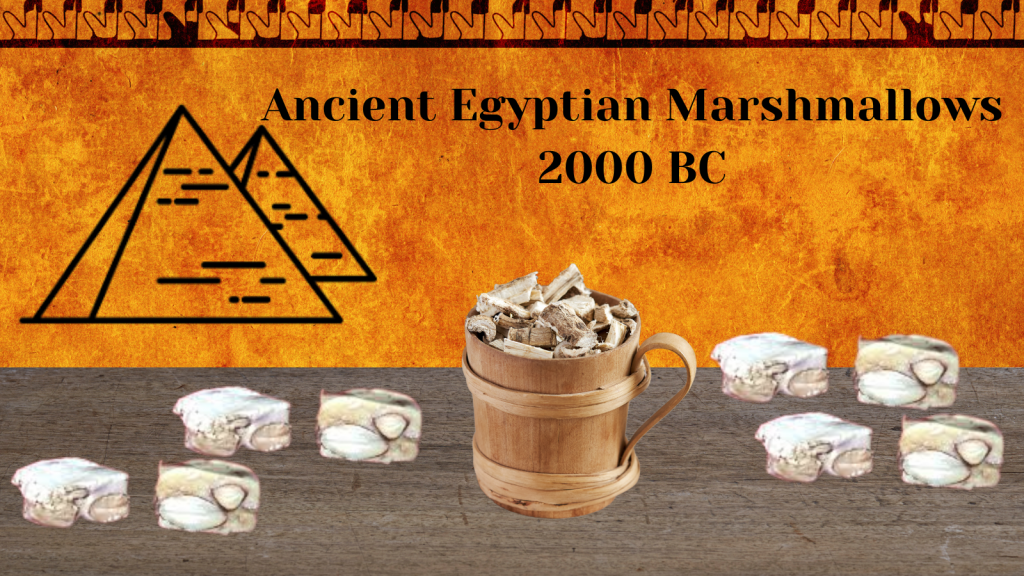
The marshmallow plant, a main staple for several thousand years, has a captivating history that dates back to ancient Egypt around 2000 BC. The marshmallow plant, initially a medical wonder, underwent a remarkable transformation and also became known as a sweet candy, made with its sap, honey, and nuts. This treat became a cherished sweet candy reserved for royalty, known as the marshmallow.
The Arabs perfected this practice during the medieval era by extracting marshmallow root juice, making an excellent binding agent for delectable confections. Later, by the 1700s, the French made a significant culinary innovation by introducing the more modern version of the marshmallow. They , a loss that we should be concerned about,accomplished this by combining marshmallow sap with egg whites, sugar, and rose water, creating a foamy meringue-like confection. Unfortunately, today’s manufacturers have dropped the medicinal marshmallow root ingredient and replaced it with genetically modified ingredients mixed with gelatin.
Ancient Rome considered this herb a nutritional staple. Marshmallow was a delicacy in ancient China. Most of the ancient world used marshmallow as a powerful medicine. The plant was sold in the marketplace as a treasured vegetable.
Modern World View of Marshmallow
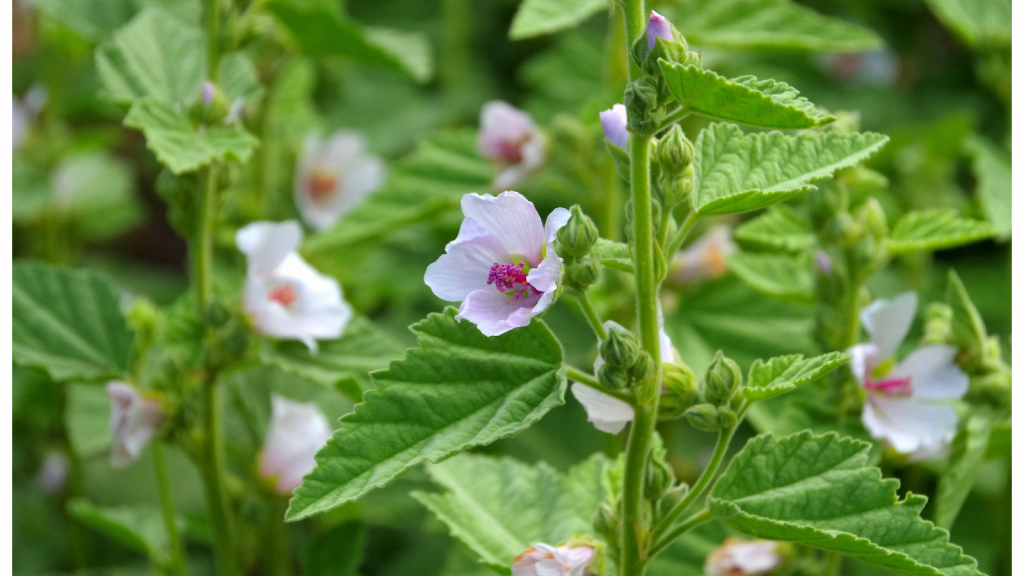
It’s a pity that in the USA, the marshmallow root, much like the common mallow, is often overlooked as a ‘weed’. However, in many other countries, this plant is highly regarded for its nutritional and medicinal properties. It’s a staple in markets worldwide, and its taste is akin to parsnips. The marshmallow root is a treasure trove of health benefits, waiting to be discovered. Nutrition is not the only use of the marshmallow plant in modern times. The root sap can be used as a substitute for egg whites. The stem’s fibers can be used to make cordage and paper.
Medicinal Uses of Marshmallow
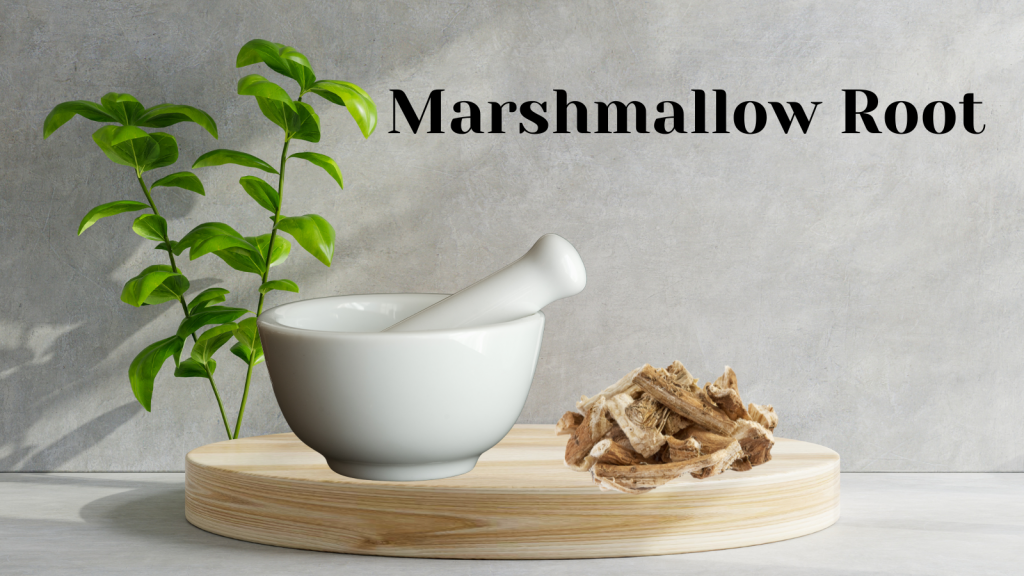
Mucilaginous Traits
The marshmallow plant, with its high mucilage content, is a potent healer. This gummy substance, secreted by some plants, is a blend of protein and carbohydrates. The mucilage gives the plant its demulcent properties, which are instrumental in protecting tissues and soothing inflamed cells. This unique feature not only enables the herb to heal the digestive tract, soothe the urinary tract, and even treat skin issues such as boils and ulcers, but also provides a protective shield to our body. In essence, the marshmallow plant is a standout demulcent, soothing, and coating,bringing relief to our body.
Generally speaking, marshmallow root helps to heal colitis, irritable bowel syndrome, and diverticulitis. The root also heals such ailments as dry cough, bronchial asthma, bronchial congestion, jamming of the bronchioles, and pleurisy.
Applications of The Marshmallow Plant

Infusion
To make this tea, place about two teaspoons of dried marshmallow leaves or root into a tea infuser and put it into a mug. Then, add 1 cup of boiling water and allow it to steep for 10–15 minutes.

Decoction
A decoction, the result of boiling a plant to release its essence into a thick, concentrated liquor, is a process that is of utmost importance in this recipe. It requires specific ingredients, with 25 grams of Marshmallow root being a key component that adds unique flavor and health benefits. Start by placing 1 liter of pure or distilled water into a pan. Then, add the Marshmallow root. Finally, bring the mixture to a boil and continue boiling until it has reduced to 750 ml.
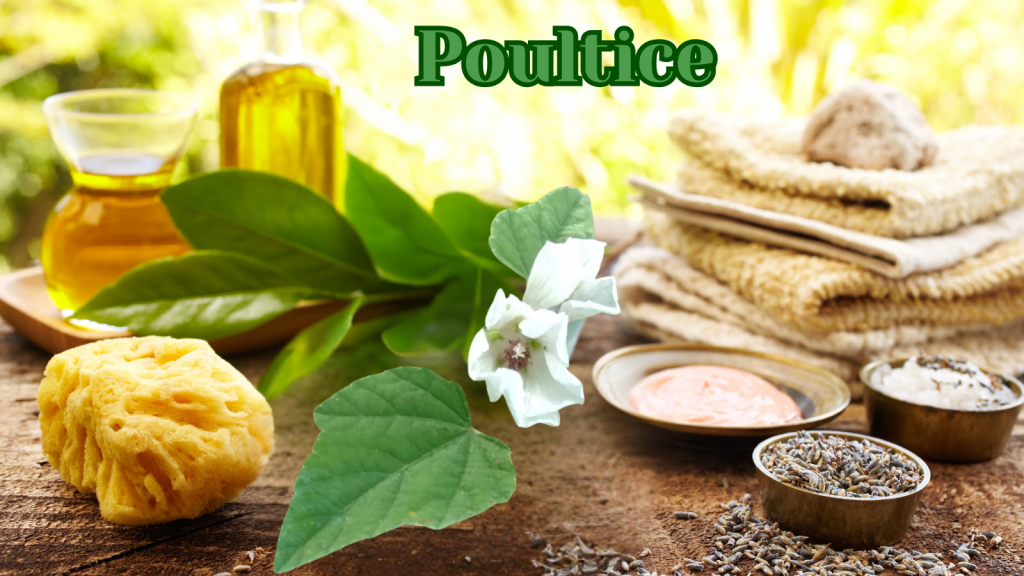
Poultice
A poultice is a soft, moist mass of plant material that is applied to the body to relieve soreness or inflammation and kept in place with a cloth. There are a few different types of poultices you can make with the marshmallow plant; they are listed below.
- Make a poultice with fresh leaves. First, macerate the leaves into a pulp. Bind the poultice with flour or clay to help it adhere together. Apply to the skin and cover with an organic fabric.
- A poultice made with dried leaves. First, moisten the dry leaves with a small amount of hot, pure water. Add a binder as necessary and apply it to the skin, then cover with a flannel or cotton cloth.
- Blend the root powder with water and apply to the skin. Then cover with organic natural cloth.
Before applying a poultice, it’s crucial to ensure the affected area is clean. This simple step can help prevent infection and ensure the poultice can work effectively. Whether warm or cool, a poultice can be a powerful tool for pain relief and skin care. Always monitor for any signs of an allergic reaction when using any form of medication.
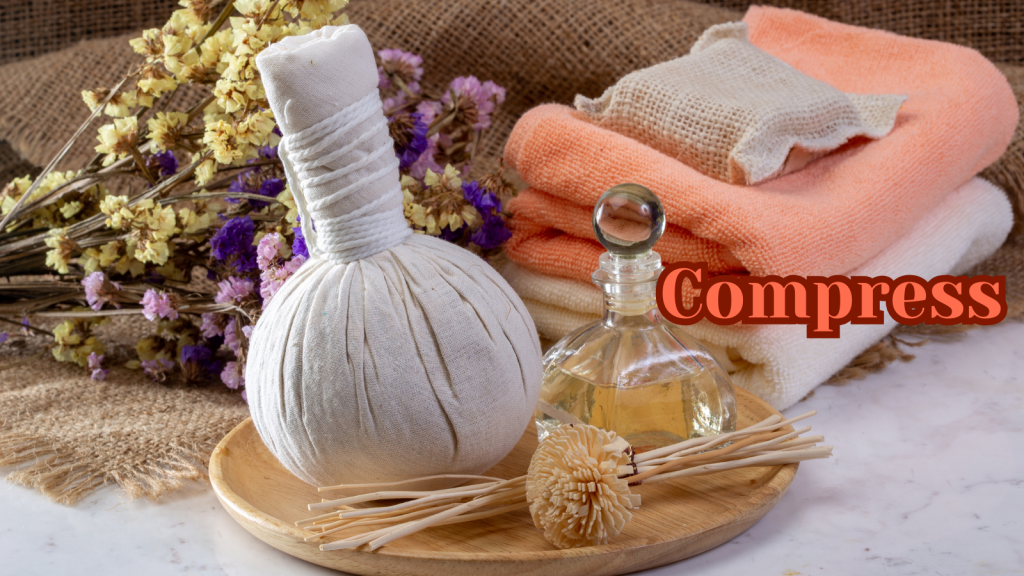
Compress
An herbal compress, with its soothing properties, is a gentle way to alleviate inflammation or stop bleeding. To make one, simply boil 1 cup of water, add 1 teaspoon of the herb, steep for about 10–15 minutes, and then apply the infused pad to the skin.
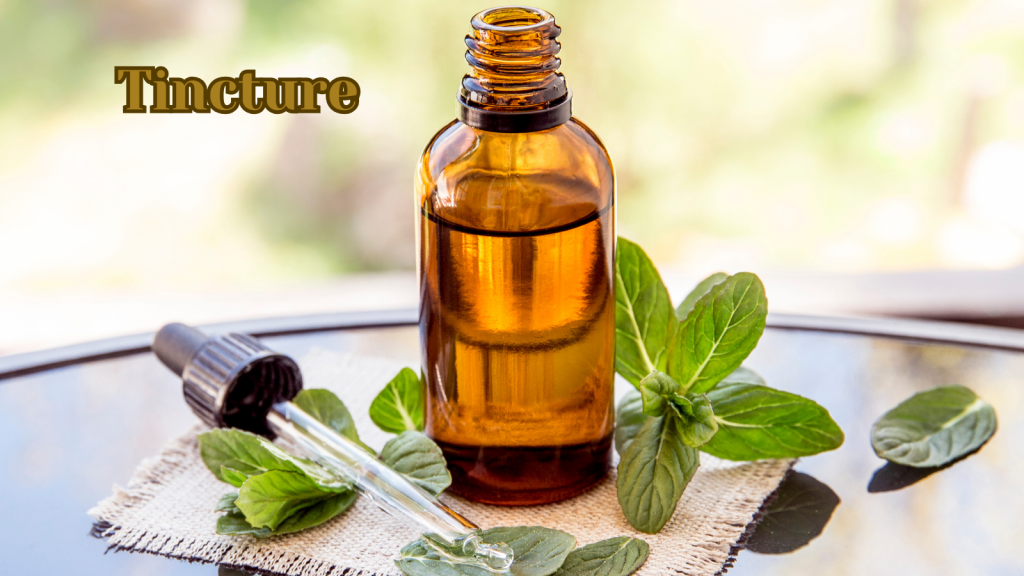
Tincture
A tincture by definition is an extraction of plant constituents dissolved in alcohol. Making a tincture, such as the marshmallow tincture, is a simple process. You start by measuring out 2 oz of marshmallow herb and placing it in a pint of alcohol (I use 100 proof). Then, all you need to do is shake the contents daily for about 2 weeks. After this, strain the herb from the alcohol and store it in an amber jar or dropper bottle. This homemade marshmallow tincture is a potent remedy for healing inflamed mucus membranes in the digestive and urinary systems, making it a valuable addition to your natural health solutions.
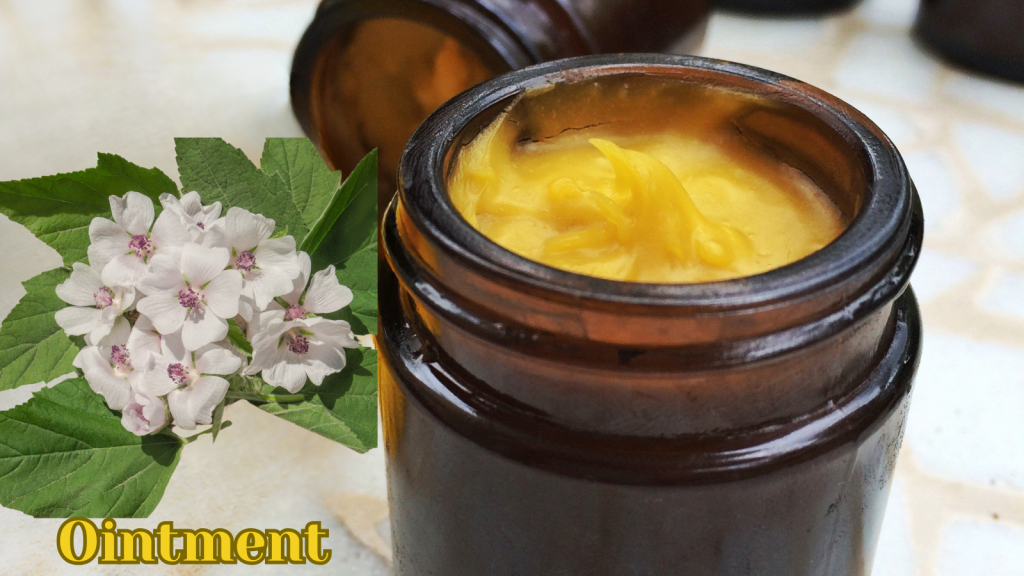
Ointment
An ointment is a smooth oil preparation designed to be applied to the skin. This soothing marshmallow ointment, made by melting 50 grams of lanolin, 50 grams of beeswax, and 300 grams of soft paraffin, and adding 100 grams of powdered marshmallow root and 100 grams of powdered slippery elm, is not just any ointment. It’s a powerful healing remedy that can be used on injuries, skin ulcers, and as a drawing salve, providing effective relief and comfort.
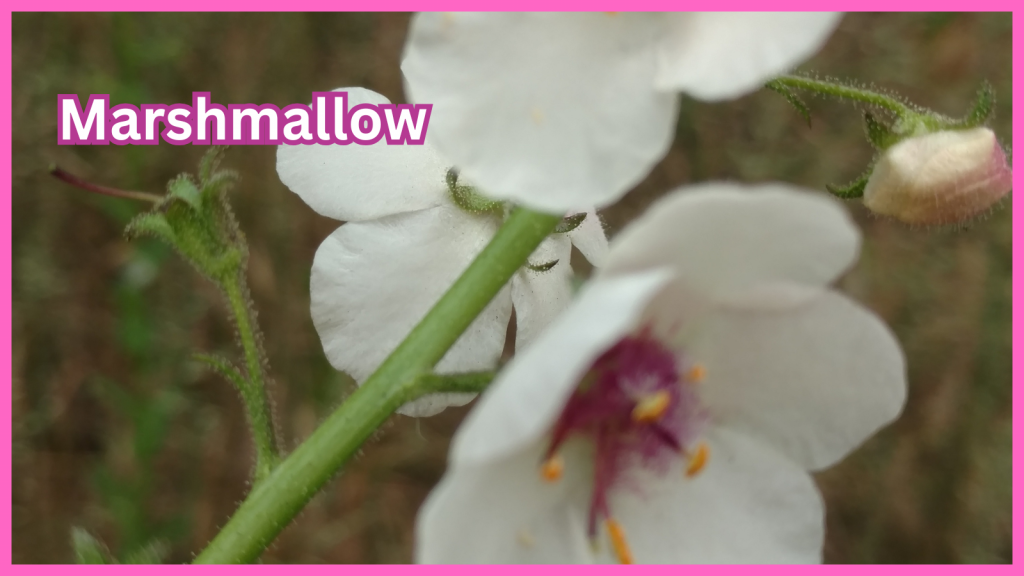
Additional Uses
Embrace the natural healing powers of this herb. Its warm infusions, a product of nature, can be used to cure cystitis and frequent urination. Additionally, drinking this tea can help alleviate bronchial and urinary disorders, providing a natural remedy for your overall well-being. Furthermore, marshmallow tea can be used as a healing mouthwash, harnessing the natural healing properties of the herb. Finally, the crushed marshmallow flowers can be infused to comfort inflamed skin, a natural solution for your skin. Moreover, you can make a syrup from this flower infusion to create an effective cough expectorant, a natural remedy for your cough.
Dosages
Hot or cold tea; steep leaves, or boil the root . Consume the tea 3–5 times daily
Tincture: 5–15 ml 3x daily
Constituents of The Marshmallow Plant
- 37% Starch
- 11% Mucilage
- 11 % Pectin
- flavonoids
- phenolicacids
- asparagine
Conclusion
With this newfound understanding, you can now ethically and responsibly incorporate common mallow and marshmallow into your cooking. We’ve explored the origins of these mallows and the intriguing evolution that led to the creation of marshmallows. Now, it’s time to venture out and find these mallows, perhaps even cultivate them in your own backyard. Once you do, you’ll be able to appreciate their unique flavor and texture, which can add a delightful twist to your culinary creations.
Marshmallow and Astragalus root are two herbs that are easy to use and a must-have for your herbal medicine cabinet. When combined in equal parts, they create a powerful antihistamine. Mix the herbs and consume. Taking equal parts of the tinctures every half hour until the allergic reaction subsides is the most effective method.
I love to explore the world of plants created by Yah. Yah made everything with perfect construction, including our bodies. Our creator knows our bodies better than any scientist or human being. It makes sense that He would create the ideal medicine and food for our bodies. Trust Yah!
Recipes and Useful Links
https://elmaskincare.com/herbs/herbs_mallow.htm
https://www.washcoll.edu/learn-by-doing/lifelong-learning/plants/malvaceae/malva-neglecta.php
https://www.learningherbs.com/blog/mallow-uses#gsc.tab=0
Homemade Marshmallow Ingredients
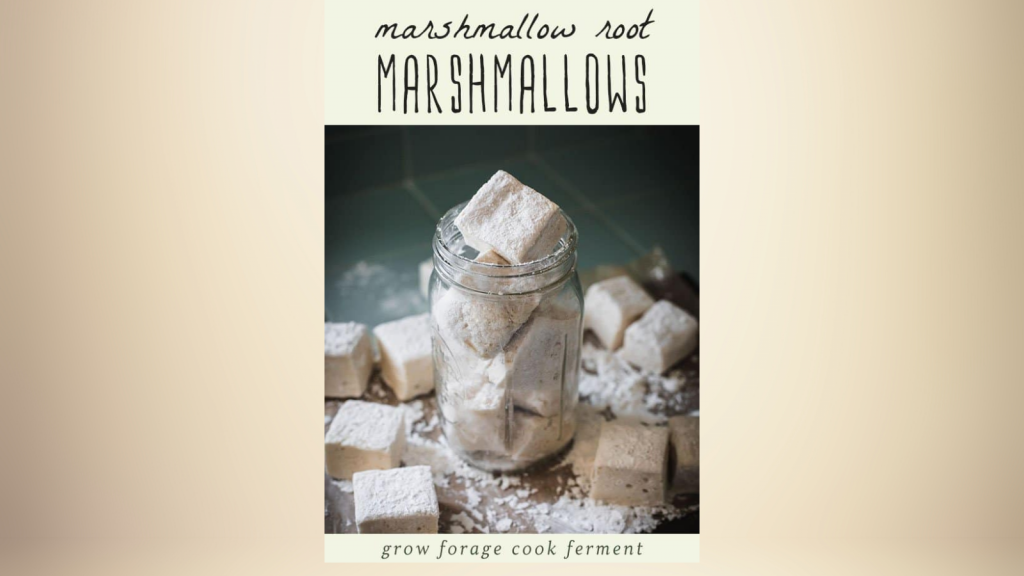
Gelatin powder is used to give marshmallows their shape. Using a high-quality grass-fed gelatin powder will also provide vitamins and nutrients.
Often, agar agar powder can be used as a gelatin substitute in recipes at a 1:1 ratio. I haven’t tested for this recipe, but if you prefer a vegetarian or vegan marshmallow it’s a possible option.
Raw honey makes these homemade marshmallows sweet! For a vegan option, you could use maple syrup or try this homemade vegan honey (along with agar agar for the gelatin) as a substitute. I haven’t tested it in this recipe, but I can say it’s a good honey alternative!
Vanilla bean powder adds an earthy and natural delicious touch of vanilla flavor to these fluffy cubes.
Marshmallow root powder is the ground form of the herbal marshmallow root. It adds classic flavor as well as herbal benefits to these tasty treats.
Arrowroot powder is a gluten-free and allergy-friendly root powder that is similar to cornstarch. In this recipe, it’s used to keep the marshmallows from sticking.
Tapioca powder or cornstarch could be used to sub for the arrowroot powder, whatever you have and your system tolerates the best.
Marshmallow Recipe
First, bloom the gelatin in the bowl of a stand mixer by pouring the gelatin over 1/2 cup of warm water and letting it sit for about 10 minutes.
In the meantime, add the other half cup of water, honey, and salt into a small pot.
On the stovetop, using a candy thermometer, toggle the heat between medium and high. Avoid stirring the mixture after the first minute so it doesn’t boil over.
Bring the temperature up to between 230–240° F (110–115° C), which takes about 10–14 minutes.
Mix the gelatin on low speed, and slowly pour the honey mixture into the stand mixer. Slowly increase the speed to high and whip until the mixture has reached its “peak.”
This means it will look and feel like pure marshmallow fluff, yay! It took mine about 6–10 minutes to reach its peak. In the last minute of whipping, add the marshmallow root and vanilla bean powder.
As the marshmallows are beating to peak fluff in the mixer, prepare a 9×9 pan with parchment paper. Dust the parchment paper with half of the arrowroot powder to keep the marshmallows from sticking.
When the marshmallow mixture is at its peak, quickly scoop it into the pan, and flatten the top with an offset spatula. Dust the rest of the arrowroot powder onto the top of the parchment paper.
Put the other piece of parchment paper over the top of the pan of marshmallows, so it can set overnight.
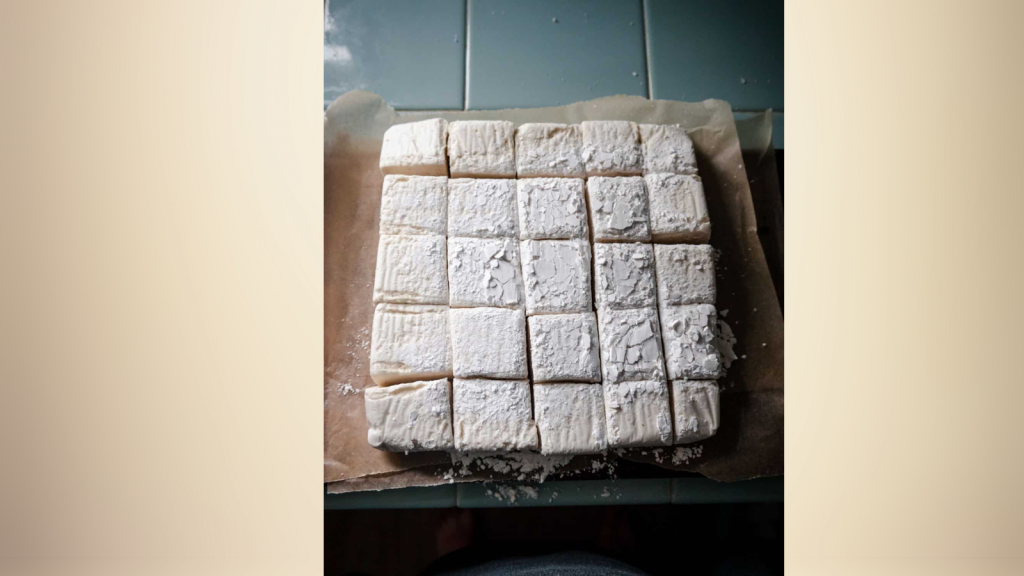
The next day, you can take the marshmallow out of the pan by carefully flipping it upside down onto a cutting board. Take the parchment paper off and use a sharp knife to cut the marshmallows into cubes.
How long do homemade marshmallows keep?
These homemade marshmallows are delicious right away, but can also be stored in a jar in the fridge for 1–2 weeks.
https://www.growforagecookferment.com/homemade-marshmallows
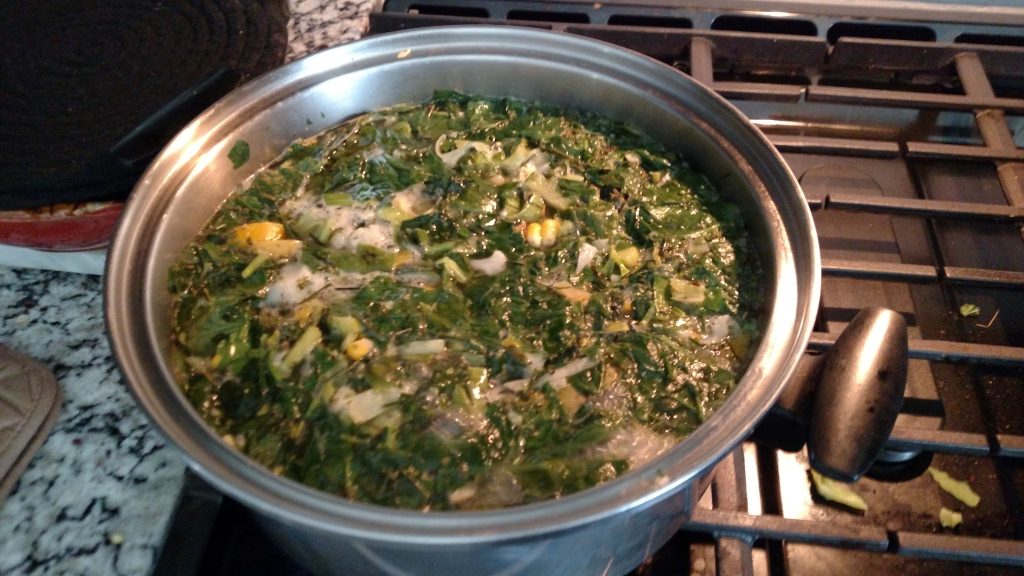
Mallow Soup
2–3 large handfuls of mallow leaves
2 tablespoons butter
1 large or 2 small onions, finely sliced
1 large carrot, chopped
2 celery sticks, chopped
1 large garlic clove, crushed
4 cups good chicken or vegetable stock
1 medium potato
2 tablespoons yogurt or crème fraiche (optional)
a pinch of freshly grated nutmeg
salt and freshly ground black pepper
Melt the butter in a large pan and sauté the onion, plus the carrot, celery and garlic, until soft but not brown. Add the stock. Bring to the boil and simmer until the potato and carrot are soft and can be mashed with a fork. Add the mallow leaves and simmer for 5–10 minutes. Season with salt, pepper and nutmeg. Puree the soup with a hand blender. Return to the pan, stir in the cream and warm to taste. Serve garnished with a drop of yogurt or cream and a generous sprinkling of chopped herbs (chives, parsley, rosemary, or thyme work well).
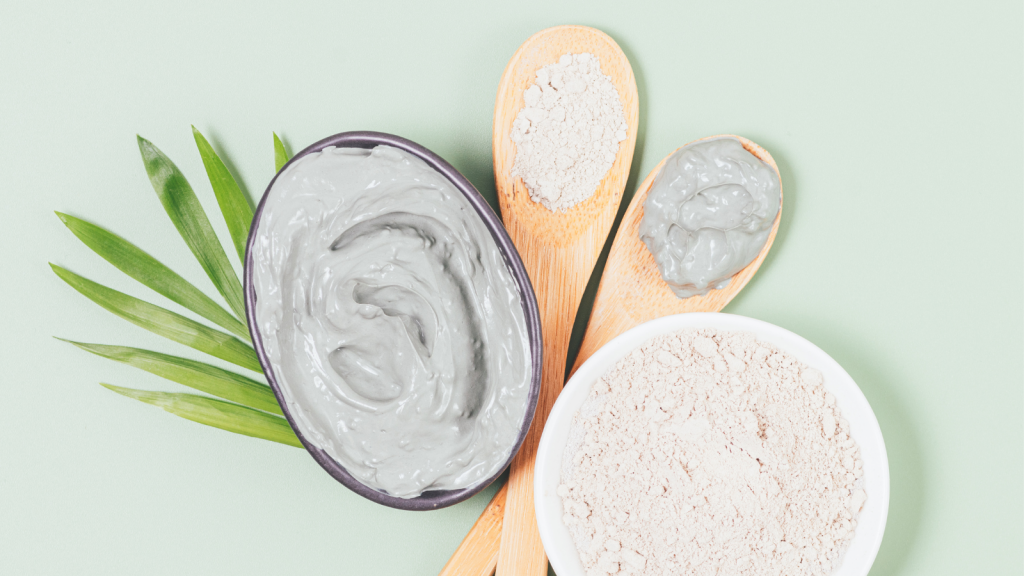
Marshmallow face mask
The marshmallow face mask is also apt for sensitive skin and the ingredients required to prepare it include:
- 2 tablespoonfuls (30 ml) of a potent decoction prepared with marshmallow root
- Superior quality oatmeal
- 2 tablespoonfuls (30 grams) of natural yoghurt
Blend the marshmallow infusion and the yoghurt and add the oatmeal. Stir the mixture thoroughly to prepare a paste. Apply this mixture uniformly and gently to your face.
https://www.herbs2000.com/herbs/herbs_marshmallow.htm
https://mountainairnaturals.com
©Jennifer Wallace 2025